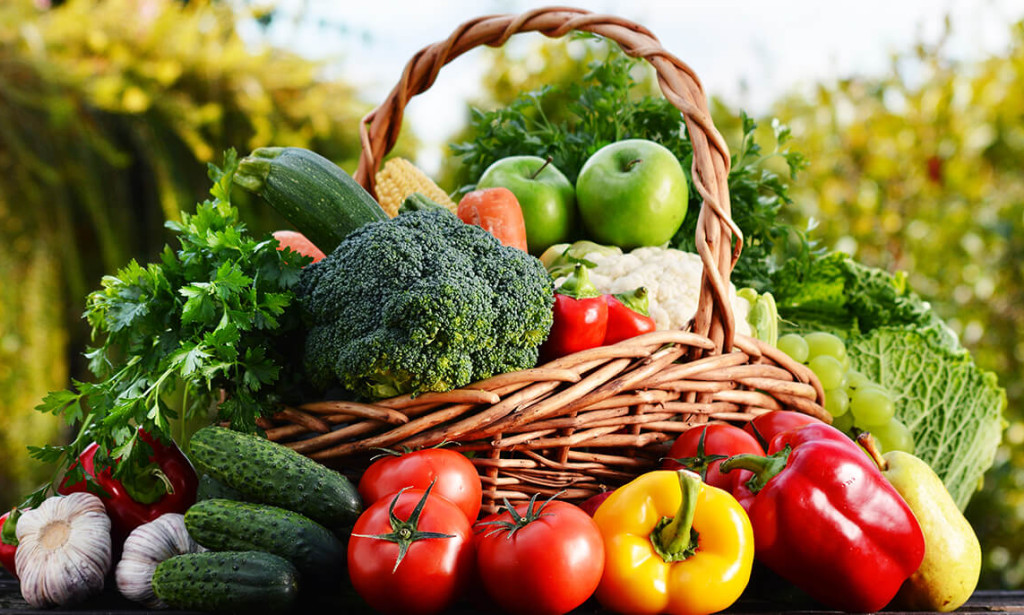The systems of body are both distinct and interactive and always working to maintain homeostasis. To contribute to the overall physical equilibrium that sustains life, each system must meet its metabolic needs through the nutrition gotten from food. Regarding that essential nutrients necessary for human survival include carbohydrates, proteins, lipids, vitamins, minerals, Fiber and water. All macronutrients are organic compounds composed of carbon, hydrogen, oxygen and sometimes other elements. As potential calorie sources, they can be oxidized to produce ATP, the body's main source of energy, with exception of Fiber which — it doesn't provide energy but it helps keep the digestive system movements healthy and flexible.
Fruits are an excellent source of essential vitamins and minerals, and they are high in fiber. Fruits also provide a wide range of health-boosting antioxidants, including flavonoids.Eating a diet high in fruits and vegetables can reduce a person’s risk of developing heart disease, cancer, inflammation, and diabetes. Sufficient and regular consumption of fruits and vegetables is commonly regarded as an essential nutritional, preventive activity to maintain health.
The nutrient composition of fruit varies greatly among the different types, but all varieties contain important nutrients. Fruit tends to be high in vitamins and minerals. These include vitamin C, potassium and folate VB12, of which many people don’t get enough, Fruit is also high in fiber, which has many health benefits.
Eating fiber may help lower cholesterol, increase feelings of fullness and contribute to weight loss over time What’s more, fruits are loaded with antioxidants, which help fight free radicals that can damage cells. Eating a diet high in antioxidants may help slow aging and reduce the risk of even threatful cancer related diseases. Fruits help in relaxing blood vessels, protect skin and promote vision, control heart rate, help body develop resistance against infections and contain a variety of minerals which maintain Bone mass and skeletal muscle development.
Fruit and vegetable juices affect cardiovascular risk factors, such as lowering blood pressure and improving blood lipid profiles. The main mechanisms of action included antioxidant effects, improvement of the aspects of the cardiovascular system, inhibition of platelet aggregation, anti-inflammatory effects, and prevention of hyperhomocysteinemia. Drinking juices might be a potential way to improve cardiovascular health, especially mixtures of juices because they contain a variety of polyphenols, vitamins, and minerals from different fruits and vegetables. Phytochemicals can have complementary and overlapping mechanisms of action, including modulation of detoxification enzymes, stimulation of the immune system, reduction of platelet aggregation, modulation of cholesterol synthesis and hormone metabolism, reduction of blood pressure, and antioxidant, antibacterial, and antiviral effects. Although these effects have been examined primarily in animal and cell-culture models, experimental dietary studies in humans have also shown the capacity of vegetables and fruit and their constituents to modulate some of these potential disease-preventive mechanisms.
The World Health Organisation and Food and Agriculture of the United Nation reports recommend adults to consume at least five servings of fruits and vegetables per day excluding starchy vegetables and The American Heart Association (AHA) recommends four to five servings each of fruits and vegetables daily. Depending on their age and sex federal guidelines recommendations also categorized.
Excessive fruit intake can cause stomach upset in some individuals. In fact, heartburn, diarrhea, Acid reflux, and bloating are all potential side effects of eating too much fruit. High blood sugar is another side effect of fruit consumption, and can be potentially dangerous for people with diabetes.

You must be logged in to post a comment.